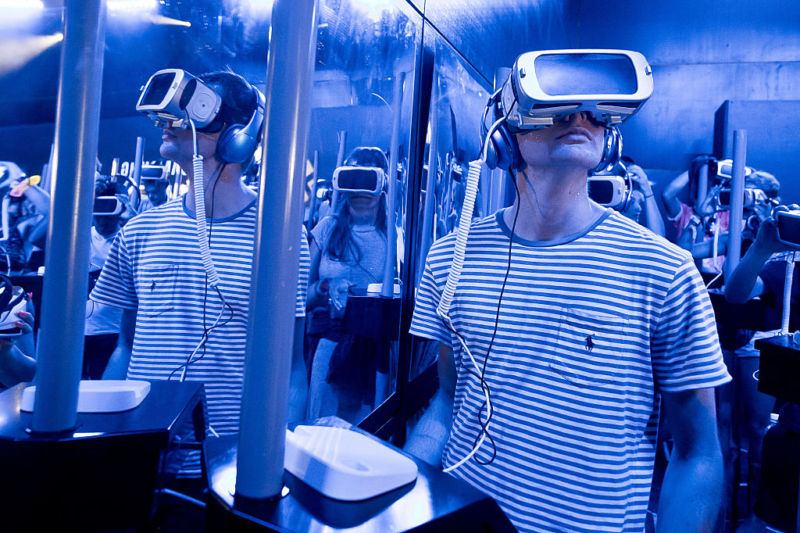
“We are looking at sensory immersion. The ideal scenario with virtual reality is to get it as near to real as possible for you to maximise that environment.
“From the autonomous driving point of view, it’s a big thing.”
Brian Waterfield is virtual reality and high-end visualisation technical lead at Jaguar Land Rover (JLR), and he is not talking about virtual reality’s potential in the near future; this is technology he is developing and working with right now.
This might seem surprising at a time when virtual reality (VR)—and its close cousin augmented reality (AR)—are mostly thought of as gaming and entertainment technologies. Yet UK developers, not least those emerging from London’s tech incubators, are successfully pushing themselves to the forefront of industrial and business applications for VR.
With so much disruptive development taking place in such a short period of time, thanks in most part to the emergence of affordable head-mounted displays (HMDs) such as Oculus Rift and HTC Vive, industry analysts are struggling to predict how the market is likely to grow over the next few years.
MarketsandMarkets, for example, initially suggested that VR would reach $1.06 billion (£820 million) by 2018, but this estimate has since been revised; the industry was already worth $1.37 (£1.06 million) billion last year—and could hit almost $34 billion (£26 billion) by 2020 for VR alone.
TrendForce is more optimistic still, predicting a total market in 2020 for both VR and AR of some $70 billion (£54 billion), while Digi-Capital goes all-out with a forecast of $150 billion (£116 billion).
High-end gaming will continue to be the public face of VR for a while yet. But much of that predicted market share will lie in everyday business, health, and manufacturing applications, with developers overjoyed at being able to take advantage of the new wave of inexpensive and increasingly mobile VR hardware spawned by the games industry.
“We’ve moving from old school to new school,” admits Michael Kaplan, who heads up VR development at Nvidia. “Gaming is low-hanging fruit. The professional side of VR will become more important going into the future.”
-
JLR's virtual cave, showing how it tweaks both car design and the manufacturing process via VR/AR simulation.
-
-
-
-
Take it up a gear
Back at JLR, Brian Waterfield is quick to point out that the company started using a four-wall VR cave within its vehicle packaging department, which does space-assessment for new vehicles, almost 10 years ago.
“We found VR gave us a lot more scope across the business,” he says. “The high resolution and functionality of the cave allowed us to trial it in different areas of the business such as manufacturing and service. That developed and now it touches on the whole of the development process.”
In JLR’s current Virtual Innovation Centre, Waterfield added HMDs to the mix—“we’re using Vive HMDs which are more in the gaming and entertainment sector but we’re trying to enhance them to industry”—and has more recently introduced motion capture techniques not too far removed from those used by Hollywood.
“You’ve got all these little balls on the joints of your body. Optical tracking picks up their infrared reflection and sends it to software that has a skeleton. This can then work out the movement of the body in relation to muscle stresses and strains on the operator or, from the customer point of view, how the experience of driving may be affected.
“Say you’re going down the track [the manufacturing production line] and there’s an operation such as fitting a wheel. We would set up the same thing in the virtual world and record the body movements while that activity was going on. Then we can look at how to maximise that process, but also look at the safety of the operators themselves.
“It’s a study of the body of movement.”
JLR has used these techniques to optimise the customer experience too. For example, the company made changes to its vehicles’ stowage design after studying in the virtual world how luggage areas of the boot were accessed.
The VR cave now covers the whole product line: “We have designers in there, engineers from development, and the manufacturing and service guys too. We even have some of the marketing and sales people.”
Of course, tweaking the low-level manufacturing environment and processes by way of VR modelling and simulation might not be practical in every situation. Another approach is using HMDs to simply boost the efficiency of day-to-day working. Vuzix, for example, has some smart glasses that, backed by some clever software, send real-time updates to warehouse pickers. Those glasses, with the right setup, could also overlay a map that shows the most efficient route for a picker to take.
reader comments
62